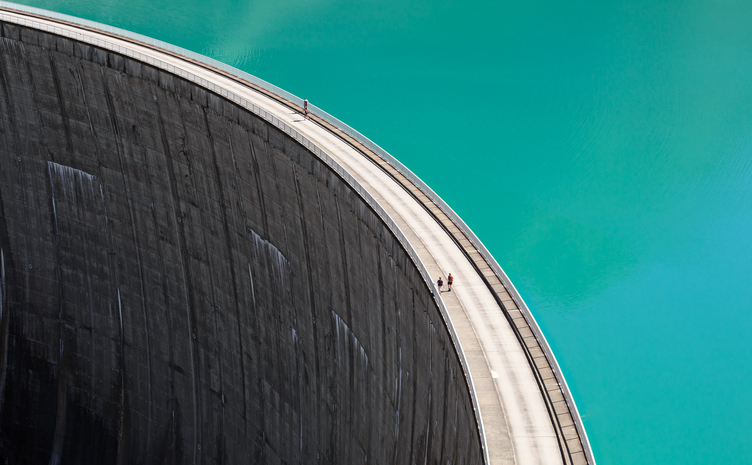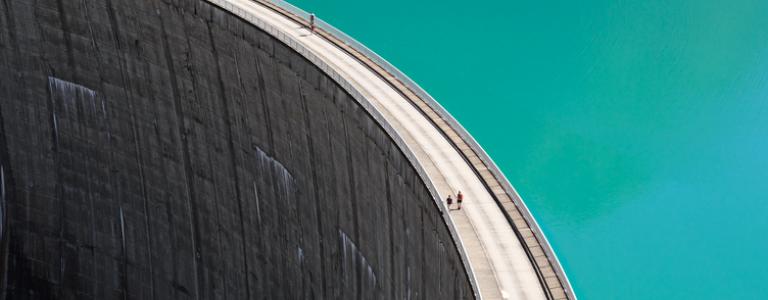Water Transfers: What they are and why they need to be better managed
One of the most ambitious responses to the unequal distribution of water around the globe is the large-scale physical transfers of water from one source or basin to another—otherwise known as water transfers. We explore why they happen and how we can manage them better.
In a world where water scarcity affects more than 40 per cent of the population—and potentially up to five billion people by 2050—it is inevitable that human ingenuity will search for a solution.
While water scarcity is a complex issue, unequal distribution of water across the world is definitely a factor. Some regions enjoy abundant access to fresh water while many others suffer from acute shortages. This inequality of water availability will increase in the future based on climate change scenarios.
One of the most ambitious responses to unequal distribution is the large-scale physical transfers of water from one source or basin to another—otherwise known as water transfers.
Ambitious Engineering Undertakings
Water transfers often involve systems of dams, reservoirs, pipes or canals to transfer large amounts of water from a donor basin to a recipient basin. These might extend within the same region or country, but they can also extend across continents.
While many water transfers are implemented to address a water imbalance, they can also be developed for economic reasons. The engineering of dams and reservoirs to relocate vast amounts of water for the generation of hydroelectricity or to enable irrigated agriculture, for example, is considered a water transfer.
Some regions enjoy abundant access to fresh water while many others suffer from acute shortages. This inequality of water availability will increase in the future based on climate change scenarios.
Either way, water transfers are large and lengthy undertakings that expend significant resources and can have long-term impacts on large areas.
Impacts on Water Quality and Water Chemistry
The large-scale transfer of water from one basin to another brings major economic, social and environmental impacts.
Communities around the donor basin can be affected by lower water levels, limiting their own access to freshwater supplies and their capacity to water crops for food. In fact, some water transfer projects have resulted in entire communities being displaced.

Constructing reservoirs by flooding wetlands can also result in the release of greenhouse gases (GHGs), such as carbon dioxide and methane. In the 1990s, researchers at IISD Experimental Lakes Area conducted two experiments to understand the full effect of flooding wetlands and uplands, respectively. In addition to GHG release, scientists found that flooding creates conditions that favour and increase the conversion by bacteria of mercury in flooded soils and vegetation to methylmercury—its toxic form.
Unsurprisingly, water transfers can facilitate the transfer of alien invasive species to the recipient basin and can mix waters of varying salinities. Moreover, moving large amounts of water can interrupt river systems and disrupt fish spawning and migration patterns.
A Curious Loophole: A case from the United States
Whether or not water transfers effectively address water scarcity issues is up for debate. The fact that water transfers have a significant impact on water quality and chemistry, and therefore surrounding environments, is clear.
As scarcity and variability continue, we also need to seek more sustainable alternatives to water transfers. For instance, let’s spend more time and energy considering water efficiency and conservation projects to meet the challenge of water scarcity and growing irrigation or hydroelectricity needs.
If we continue to think of water transfers as viable management options, at minimum we need stringent regulations on the implementation and management of water transfers—particularly for environmental protection. The current legislative landscape, however, reveals a different reality.
In the United States, for example, a decision earlier this year by the Supreme Court rejected a challenge to a loophole in its Clean Water Act that allows governments to conduct water transfers with few restrictions.

In short, the U.S. Clean Water Act exists to prohibit the release of harmful pollutants into waterways. Nevertheless, under its Water Transfers Rule, if water is being transferred between basins, a discharge permit is not required. Environmentalists, nine U.S. states and the Canadian province of Manitoba sued in order to stop the rule, citing many of the water quality concerns explored above, but the Supreme Court has just declined to hear the case.
The result? Water transfers, for the time being, still go relatively unregulated in the United States. While small victories such as the recent decision to reinstate the Clean Water Rule in 26 states may seem like gains, they have little—if any—impact on the water transfers debate.
Decisions to Manage Water Based on Clear Scientific Evidence
The Supreme Court decision might be disheartening, but it does highlight the need for stronger, evidence-based controls on these rather controversial decisions.
While the Government of Canada goes so far as to publicly prescribe against water transfers, in a world facing climate change, ever-intensifying water scarcity, increasing reliance on hydroelectricity and the need for irrigated, stable food production, water transfers may prove inevitable.
If transfers are necessary, let’s make sure that we do all we can to protect water basins from pollutants, invasive species, and altered chemistries. We need stronger regulations to ensure transfers are managed for their long-term and potentially devastating impacts on people, ecosystems and economies. From industry to engineering firms to government, all links in the chain must be held to these standards to ensure implementation across the board.
As scarcity and variability continue, we also need to seek more sustainable alternatives to water transfers. For instance, let’s spend more time and energy considering water efficiency and conservation projects to meet the challenge of water scarcity and growing irrigation or hydroelectricity needs.
You might also be interested in
What to Expect at Plastics INC-5
Q and A with Tallash Kantai of Earth Negotiations Bulletin on INC-5.
The Chemical Analysis of Fresh Water (Third Edition)
This publication describes the protocols used in the IISD Experimental Lakes Area Analytical Service Laboratory for the measurement of chemical constituents in freshwater samples.
IISD Annual Report 2023–2024
While IISD's reputation as a convenor, a trusted thought leader, and a go-to source on key issues within the sustainable development field is stronger than ever, the work happening outside the spotlight is just as valuable.
We all have to keep plastics out of our lakes and rivers
In an opinion piece, IISD-ELA's Pauline Gerrard writes that researchers in Toronto found an average of 123 microplastics in one serving of freshwater fish, vastly more than the nine microplastics ingested in a serving of grocery store Alaska pollock found in a study by the same authors published earlier this year.
